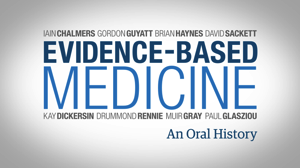Handbook of Non Drug Interventions
 The RACGP is collating a series of articles that will together comprise a Handbook of non-drug interventions (“HANDI” ).
The RACGP is collating a series of articles that will together comprise a Handbook of non-drug interventions (“HANDI” ).
From the HANDI site:
“Advances in non-drug treatments in the past few decades have been substantial and diverse: exercise for heart failure and COPD, the Epley manoeuvre for benign paroxysmal positional vertigo, knee taping for osteoarthritis, cognitive therapy for depression (and almost everything else!), ‘bibliotherapy’ (specific guided self-help books for some conditions), to name just a few.
Nearly half the thousands of clinical trials conducted each year are for non-drug treatments. However, the effective non-drug methods are less well known, less well promoted, and less well used than their pharmaceutical cousins.
There are well-established drugs/medications formularies such as the Australian Medicines Handbook. However, until now, no such formulary or resource for non-drug treatments (interventions) exists.
The HANDI project is a commitment by the RACGP National Standing Committee for Quality Care to promote effective non-drug treatments, making them visible and easy to use. HANDI is an online formulary of non-drug interventions in health care, which have solid evidence of their effectiveness.
Based on the idea of modern pharmacopoeias, each HANDI entry includes indications, contraindications and ‘dosing’. The aim is to make ‘prescribing’ a non-drug therapy almost as easy as writing a prescription for a drug.
HANDI enables clinicians to offer a greater choice of interventions to a patient, who may wish to avoid pharmacotherapy and the risks and life style changes often associated with drug treatment regimes.”
The HANDI team is led by Paul Glaziou, Professor of Evidence-Based Medicine at Bond University.
Read MoreContinuity of Care reduces the Risk of Preventable Hospital Admissions
Continuity of Care and the Risk of Preventable Hospitalization in Older Adults
Nyweide DJ, Anthony DL, Bynum JP, et al. Continuity of care and the risk of preventable hospitalization in older adults. JAMA Intern Med 2013;173(20):1879-1885.
More evidence of the benefits of a long term relationship with a particular provider for elderly patients.
Importance
Preventable hospitalizations are common among older adults for reasons that are not well understood.
Objective
To determine whether Medicare patients with ambulatory visit patterns indicating higher continuity of care have a lower risk of preventable hospitalization.
Results
Of the 3 276 635 eligible patients, 12.6% had a preventable hospitalization during their 2-year observation period, most commonly for congestive heart failure (25%), bacterial pneumonia (22.7%), urinary infection (14.9%), or chronic obstructive pulmonary disease (12.5%). After adjustment for patient baseline characteristics and market-level factors, a 0.1 increase in continuity of care according to either continuity metric was associated with about a 2% lower rate of preventable hospitalization (continuity of care score hazard ratio [HR], 0.98 [95% CI, 0.98-0.99; usual provider continuity score HR, 0.98 [95% CI, 0.98-0.98). Continuity of care was not related to mortality rates.
Conclusions and Relevance
Among fee-for-service Medicare beneficiaries older than 65 years, higher continuity of ambulatory care is associated with a lower rate of preventable hospitalization.
Read MoreShould we use Aspirin with Warfarin?
Use and Associated Risks of Concomitant Aspirin Therapy With Oral Anticoagulation in Patients With Atrial Fibrillation
Circulation 2013;128(7):721-728.
Should we use Apsirin with Warfarin?
Probably not, as there is a significantly increased risk of bleeding (aHR = 1.5; 95% CI 1.2 – 2.0), and little to no difference in cardiovascular events, even in those with a Hx of AMI or CVA who were therefore receiving aspirin as ‘secondary’ prevention.
Read MoreEvidence Based Medicine – an Oral History
Andrew Knight writes:

Read MoreThis fascinating video looks at the origins and future of the evidence based medicine movement through interviews with the major players – Guyatt, Sackett, Haynes and more.
Even they have come to see that EBM though necessary is not sufficient for getting evidence-based care to patients. T
hey have some suggested answers for the way forward including hopes for implementation science and the increasing importance of patients/consumers.
It takes 45 mins. Watch here.
Should we stent renal artery stenosis?
Stenting and Medical Therapy for Atherosclerotic Renal-Artery Stenosis — NEJM
Patients with more than 60% renal artery stenosis and hypertension were randomised to receive stunting plus medical treatment or medical treatment alone.
Conclusion:
Renal-artery stenting did not confer a significant benefit with respect to the prevention of clinical events when added to comprehensive, multifactorial medical therapy in people with atherosclerotic renal-artery stenosis and hypertension or chronic kidney disease.
So, should we be stenting renal arteries?
Read MoreNuts to you – in the nicest possible way

Association of Nut Consumption with Total and Cause-Specific Mortality — NEJM
In a study of health professionals, nut consumption was associated with reduced all-cause mortality.
This was primarily due to a reduction in heart disease associated with any nut consumption and a reduction in cancer associated with tree nut consumption
(Hat tip to Essential Evidence Plus.)
Read More